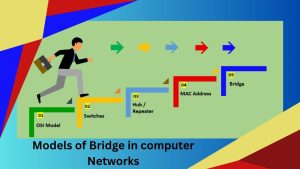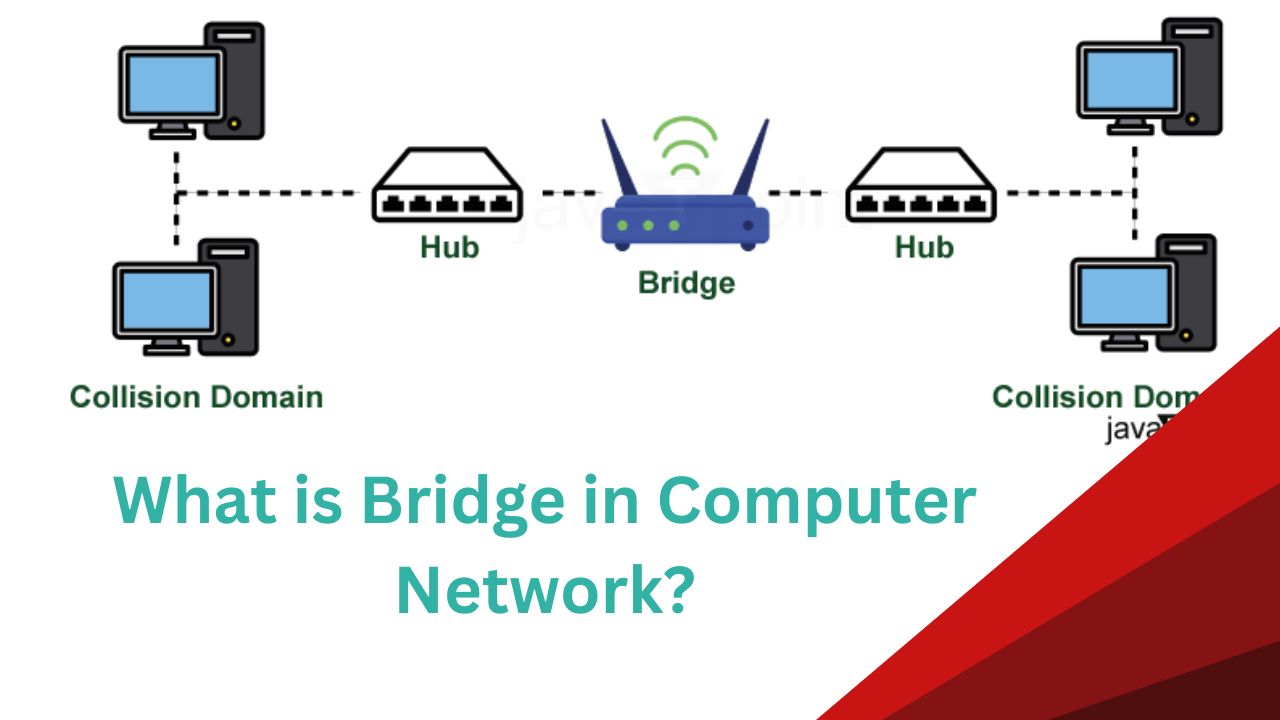Bridge in computer network is a smart device that is used for creating one bigger network by connecting smaller subnetworks. It can work as a repeater for extending the network
In this article on what is Bridge in computer network, we will discuss the definition of a bridge, how it works, its functionality, models, advantages and disadvantages.
What is Bridge in computer Network?
A bridge is a network device that connects multiple subnetworks to create a single network. It provides interconnection with other computer networks that use the same protocol. Through a bridge, multiple LANs can be connected to form a larger and extended LAN. This function of creating a single aggregate network from multiple network segments is called network bridging. It works in the data link layer, which is the second network layer in the OSI model.
Functions of Bridges
Now, let us take a look at the functions of bridges:
- Store MAC address in PC that is used in the network for reducing network traffic.
- Divide local area networks into multiple segments.
- Connects multiple networks to ensure communications between them.
- Connects LAN segments into a single network.
- Recognizes areas where data is to be sent and on which device it will be sent.
- Maintains MAC address table to discover new segments.
- Used in load filtering of network traffic by separating it into segments or packets.
How does a bridge work?
A bridge in computer network either blocks or forwards the data depending on the destination MAC address. The address is written into each data frame. Bridge accepts every packet and amplifies them to another side.
however, they allow only selected packets to pass through them that are addressed from one node in a network to a node in other networks. It receives all packets from LAN segments. The bridge builds a table of addresses from which it can identify which packets are sent from which LAN to which LAN.
Types of Bridges in Computer Networks
Following are the different types of bridges that are used:
1. Transparent Bridges
Transparent bridges are used to connect multiple network segments with other bridges to make routing decisions. This bridge fetches MAC addresses of all nodes and associated ports. The transparent bridge, then filters incoming frames with destinations MAC addresses on the same port. It then forwards in coming frames to destination MAC through associates port@. These bridges are very popular and operate in a transparent manner to all networks that are connected to hosts.
2. Source Routing Bridges
Source Routing Bridges decide the route between two hosts. They use the destination MAC address of a frame to direct it through the source routing algorithm. Every station on extended LAN knows about the route over which the frame is sent. These are used in IBM token ring networks. They learn their bridging information from the information that is included in the structure of a packet. Through this method, two similar network segments get connected to the data link layer. This is done in a distributed manner wherever end stations join within the bridging algorithm.
3. Translational Bridges
Translational bridges are used for changing one type of networking system to another. They can connect different types of networks such as Ethernet and Token ring networks. Translation bridges reorder the source and destination address bits while translating between these frame formats. These bridges can add and remove data based on the direction of transmission. They forward the frame of data link layer among LANs using different types of network protocols.
Models of Bridge in computer Networks

There are two main models of bridging. Local Bridging and Remote Bridging. Let us learn more about them.
1. Local Bridging
It is created by connecting LAN switches with local cables. This enables free communication between computers that are connected to virtual hubs and physical LAN to the same ethernet segment. Local bridging is used when LANs in the same geographical location have to communicate at link layer.
2. Remote Bridging
It is a model where two bridges are connected through WAN. It is used for bridging LANs when they are in different geographical location and they have to communicate with each other at the link layer.
Advantages of Bridges
Bridges are smart network devices that have the following advantages:
- Improve the performance of bridges by segmenting large busy networks into multiple smaller and interconnected networks.
- Cost-effective as they are simple and inexpensive.
- Increases available bandwidth to individual nodes as lesser network nodes share collision domain.
- Reduces network congestion by dividing LAN into multiple smaller segments.
Disadvantages of Bridges
like every device, bridges in computer networks also have their limitations.
- Cannot read specific IP addresses.
- Unable to provide a communication network among networks of different protocols.
- Cannot limit the capacity of broadcast messages as they transfer all the messages.
- Unable to handle complicated variable data load.
Conclusion
Bridges are smart networking devices that can be used as repeaters to extend a network. They have many benefits as well as disadvantages. Based on the requirement of your system and network, you should choose a network device that can fulfill them.










